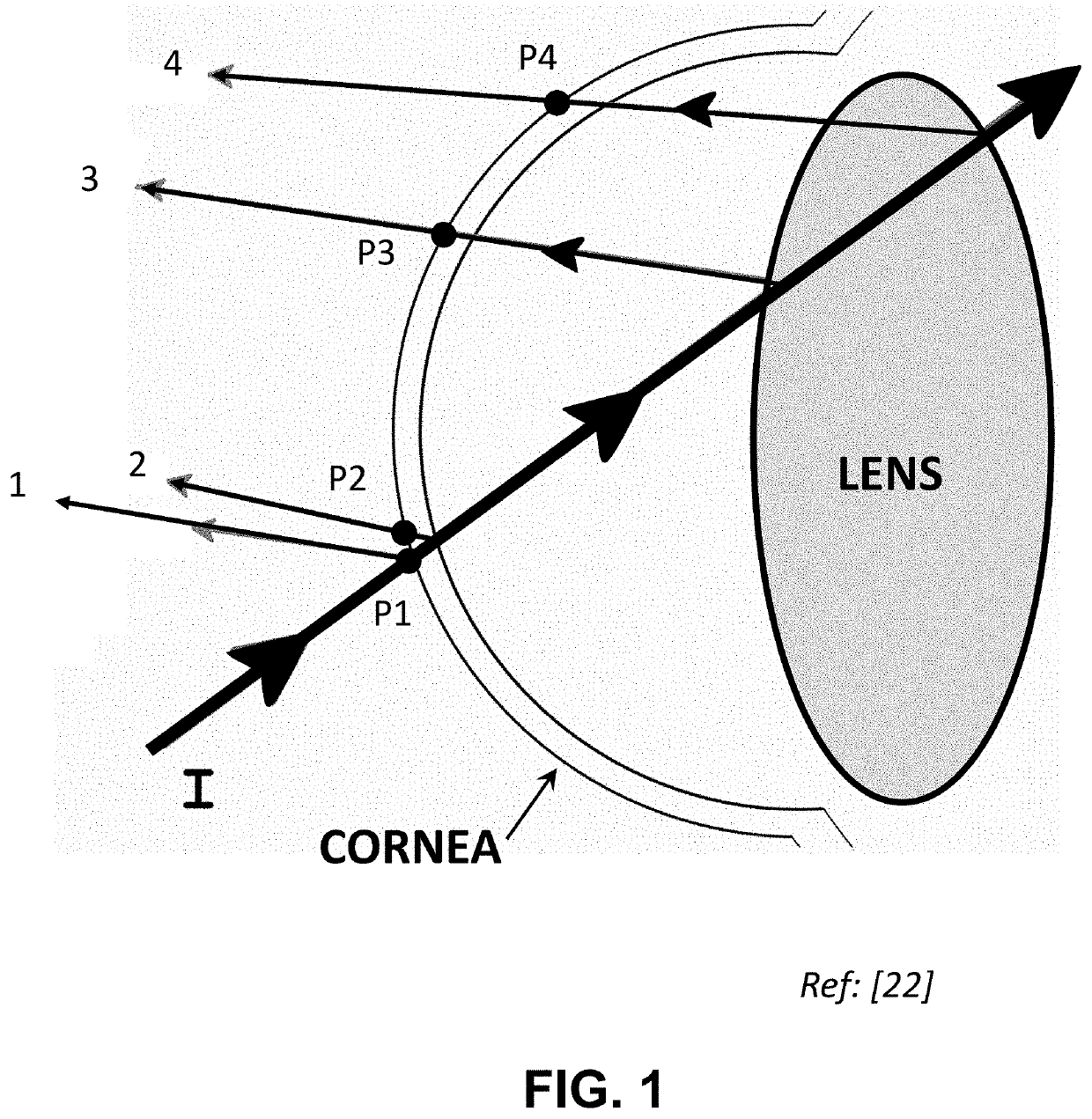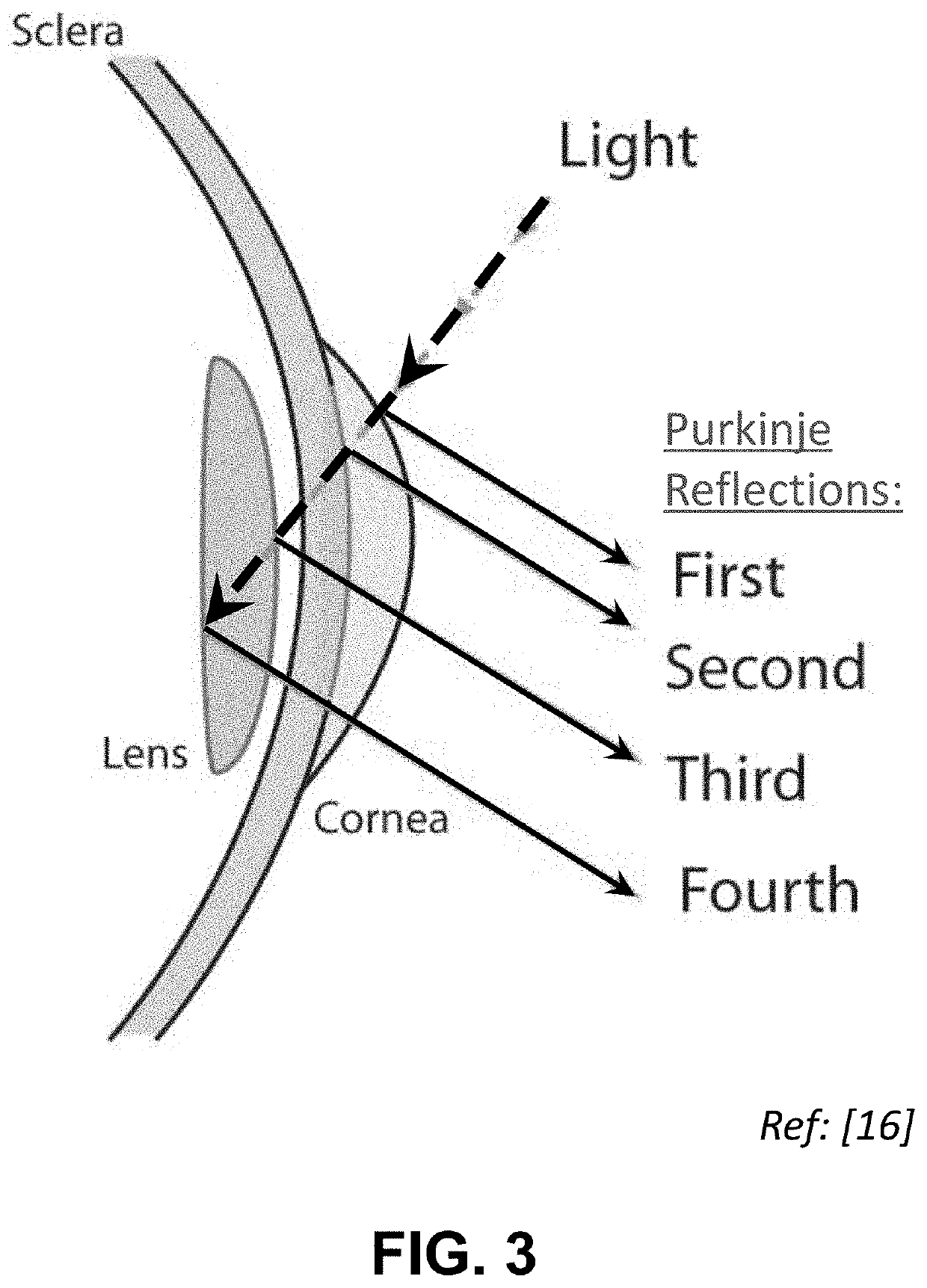System and Methods for Dynamic Position Measurement of Ocular Structures
a dynamic position and measurement system technology, applied in the field of ophthalmology and optometry, can solve the problems of weak oct signal, general limited overall accuracy to 5-7 um, and inability to combine accuracy, dynamic range and speed to actively control surgical procedures in real-tim
- Summary
- Abstract
- Description
- Claims
- Application Information
AI Technical Summary
Benefits of technology
Problems solved by technology
Method used
Image
Examples
first embodiment
[0105]FIG. 24 shows a schematic layout of an optical system 8 of a Purkinjenator™ optical device, according to the present invention. Optical system 8 comprises means and a methodology for dynamically controlling the illumination in real-time during the light acquisition process, and for separating any overlapping Purkinje images, even in the presence of complicating reflections. The Purkinjenator™ optical system comprises a telecentric image relay element 24, similar to the “Dynamic Purkinje-Meter” instrument used by Tabernero and Artal [10, 14, 20]. However, there are additional elements in the present invention that are different than the system taught by Tabernero, et al. Note: the words “optical device”, “optical instrument”, “optical system”, and “optical set-up” are interchangeable and mean the same thing. Also, the phrases “eye-tracking” and “gaze tracking” are interchangeable and mean the same thing. The word “IOL positioning”, as it refers to in-vivo movement of an implant...
second embodiment
[0128]FIG. 32 shows a schematic optical layout of a Purkinjenator™ eye-tracking device, according to the present invention. In this version, the rear LEDs 14 are replaced with a Helmholtz LED Source 140. Light from source 140 is collimated by collimating lens 142, which then passes through a perforated Helmholtz aperture (source) plate 144 and on to beamsplitter 16, where it is re-directed through front lens 18 (L1) toward eye 2.
third embodiment
[0129]FIG. 33 shows a schematic optical layout of a Purkinjenator™ eye-tracking device, according to the present invention. In this embodiment, a linear array of rear Helmholtz LEDs 150 is located one focal length from the front objective lens 18 (thus, all rays are collimated in object space).
PUM
 Login to View More
Login to View More Abstract
Description
Claims
Application Information
 Login to View More
Login to View More - R&D
- Intellectual Property
- Life Sciences
- Materials
- Tech Scout
- Unparalleled Data Quality
- Higher Quality Content
- 60% Fewer Hallucinations
Browse by: Latest US Patents, China's latest patents, Technical Efficacy Thesaurus, Application Domain, Technology Topic, Popular Technical Reports.
© 2025 PatSnap. All rights reserved.Legal|Privacy policy|Modern Slavery Act Transparency Statement|Sitemap|About US| Contact US: help@patsnap.com



